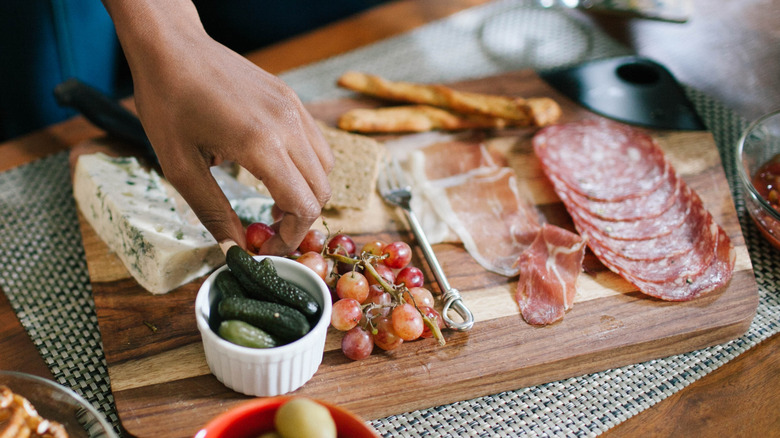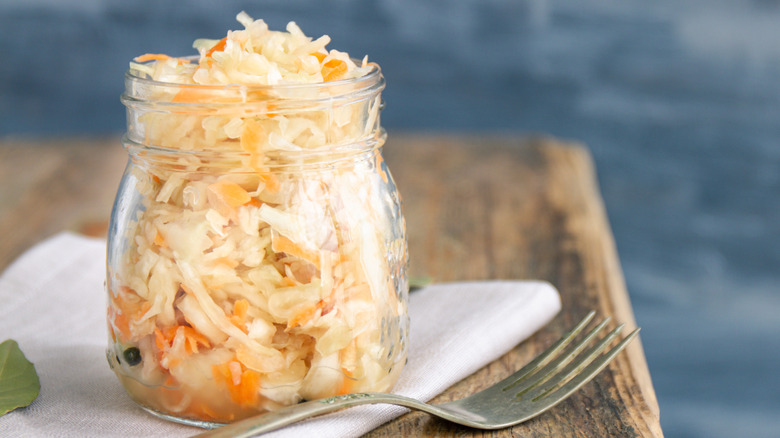Why Sauerkraut Belongs On Your Charcuterie Boards
The average charcuterie board features a unique combination of meat (often cured), multiple types of cheese and nuts, crackers, bread, chocolate, fruit, and jam. While there may be rules to fill a charcuterie board to its full capacity, there are no rules to the what can be found on the board itself. Because of this, chefs can be a little more creative when making their own board. Perhaps, if the same old meat and cheese is getting a little bit mundane, include a new taste: sauerkraut!
While the distinct tangy taste of sauerkraut is certainly not for everyone, it may be complemented alongside the various treats on a charcuterie board. In a similar way that including pickles or olives softens the rich taste of meat and cheese, sauerkraut can be a welcome change that gives your mouth a break from the same family of flavors.
Why sauerkraut is a perfect fit for your board
If not served as a side dish, you can usually find sauerkraut on top of meat dishes like bratwurst sausages or Reuben sandwiches. This is because its strong, acidic taste complements the otherwise hearty taste of a meat-heavy meal. Sauerkraut is also ideally crunchy, which adds a unique texture to a softer dish. Sauerkraut's distinctive taste and texture makes for a very interesting addition to any meal. This is why the fermented dish is such a delicious and complementary inclusion to a charcuterie board, alongside sour pickles and salty olives, so each option isn't overwhelmingly savory.
In fact, charcuterie board creativity does not have to end at the addition of sauerkraut. You can upgrade charcuterie boards by replacing some of their more boring ingredients, like incorporating watermelon radishes and goat cheese into the selection (two top replacements recommended by Chowhound). While most people can find an ingredient on a charcuterie board to enjoy, bringing a more diverse plate will surely make a board the life of the party.

